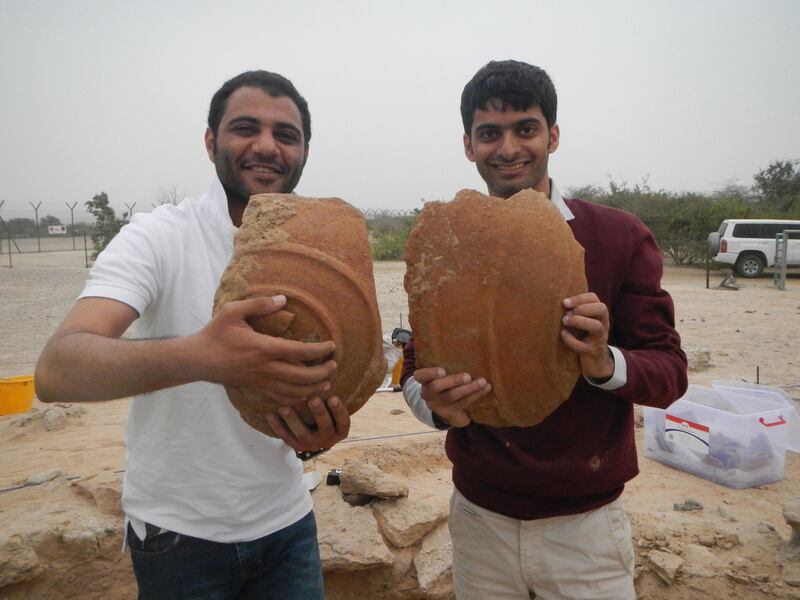Like a trademark, the Dilmun stamped their Bronze Age prowess on goods they sent across the Gulf and today those symbols are writing a chapter in island's history.
ABU DHABI // Our understanding of ancient history seldom changes in an instant, but when archaeologists unearthed a trade stamp from its resting place of 4,000 years on Sir Bani Yas Island, a stepping stone in the story of the Dilmun civilisation was uncovered.
The Dilmun ruled the Arabian Gulf trade routes four millenia ago but the find in a stone building on the south-west coast of the island has persuaded archaeologists of a trading post off Abu Dhabi’s coast.
Among the most significant finds of the excavation is the Dilmun stamp seal, an important tool that merchants used in authorising trade from the civilisation that was based in modern-day Bahrain.
The Dilmun, one of the oldest civilisations in the Gulf, stretched from Kuwait to Qatar but it was their maritime prowess that allowed them to control the trade routes linking Mesopotamia to the Orient.
Archaeologists believe that the Sir Bani Yas Island may have been a trading post for the copper mining and smelting that the people from what is now the UAE were known for.
“Holding this in our hands for the first time since a Bronze Age merchant had used it almost 4,000 years ago was a magical moment,” said Abdulla Al Kaabi, of Abu Dhabi Tourism & Culture Authority.
“The moment we saw those small stones, digging further then when we discovered the artefact seal we realised it was very special. We also know the historical significance of a find this rare.”
According to Mr Al Kaabi and his colleague Ali Al Meqbali, the seal appears to show an animal and a human figure under the Moon.
The archaeologists plan to further investigate their find and compare it with specimens found further north in the Gulf to determine the meaning from the stamp.
The excavation, which started in February, will continue until the end of the week, but both archaeologists said that there is a great chance of finding more artefacts when they resume digging next year.
The Abu Dhabi TCA team also found large fragments of jars belonging to a time when the UAE, Bahrain, Iraq and south Asia were engaged in intensive maritime trade.
The archaeologists believe that this particular site might have been a storehouse for when travellers would stop along the Arabian Gulf to trade.
“Our recent excavation on Sir Bani Yas Island has rewritten our knowledge of contacts with the Bronze Age civilisations of the Arabian Gulf and beyond,” TCA archaeologist Mr Al Meqbali said.
Although fragments of such pottery have been found before in the UAE, this is the first time that several complete examples have been discovered. Analysis of the artefacts is just beginning but preliminary results indicate that pottery from Pakistan was also found.
Bronze tools are also present, attesting to the important role that people from what is now Abu Dhabi emirate played in the export of copper to its Bronze Age neighbours.
Along with the bronze tools is a well-preserved fish hook.
Together, the artefacts and the building indicate that Sir Bani Yas was part of a trade network that stretched from the Shatt Al Arab, a river in what is now southern Iraq, to India and the east.
Historians are still researching why Sir Bani Yas was particularly important in this trade but there is a long history of occupation on the island because of the presence of fresh water.
The team will return to the site next year and Mr Al Kaabi and Mr Al Meqbali say that the likelihood of finding more artefacts is very high.
nalwasmi@thenational.ae






